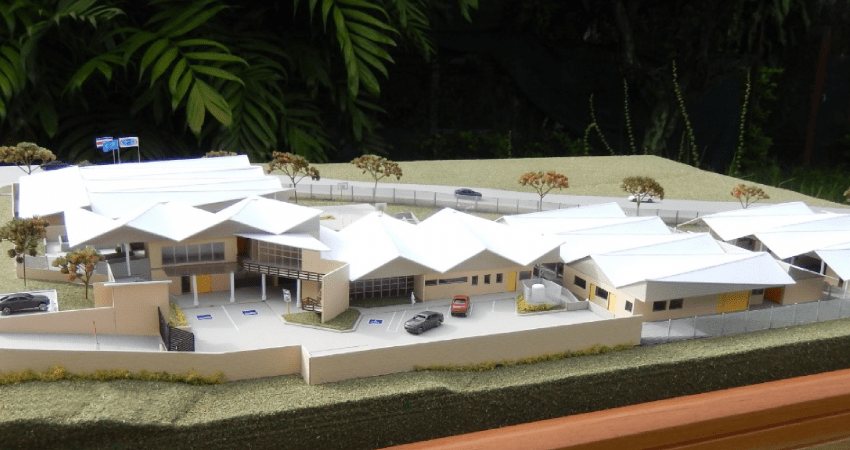IOM Costa Rica delivers plans to the General Directorate of Migration and Aliens (DGME) to build a new center for migrants

The General Directorate of Migration and Aliens (DGME) of Costa Rica received technical and financial support from IOM for the preparation of the plans (architectural, structural, mechanical and electrical), as well as the respective budget and technical specifications associated with the new Northern Bicentennial Migrant Station (EMBINORTE).
According to the work schedule proposed by the DGME, the first modules of the complex for migrants in transit will be built by October 2021.
The Northern Bicentennial Migrant Station (EMBINORTE) is a platform that will mark a milestone in the process of strengthening migration management in Costa Rica, a country that received approximately 100 to 150 extraregional migrants per day, most of them bound for the United States, prior to the pandemic.
Since the beginning of the COVID-19 pandemic in March, the centers have maintained a constant population of approximately 160 people, while their housing capacity is 270. The infrastructure allows for optimal housing of the usual migratory regularization processes and adds to these the capacity to provide basic general health services, epidemiological control, vaccination and planned areas of care, support and information on psychosocial issues to vulnerable populations by the Costa Rican state counterparts.
Likewise, it is designed to be a platform for response to migratory and humanitarian emergencies in general, with the capacity to become a center of operations and shelter with an extended capacity of up to 120 people in a safe environment.
Since its inception, it has been a project that considers its host community, improving not only the urban part of its environment through a linear park in its perimeter, but also represents substantial improvements to the electrical and drinking water system in the community, while providing employment opportunities and spaces for social cohesion directly integrated into the project.
All of the inputs generated incorporate the best international practices for this type of center for migrants, in terms of security, habitability and management of internal processes.
These actions were developed thanks to the contribution of the Western Hemisphere Program, with the support of the Bureau of Population, Refugees and Migration of the U.S. Department of State.
